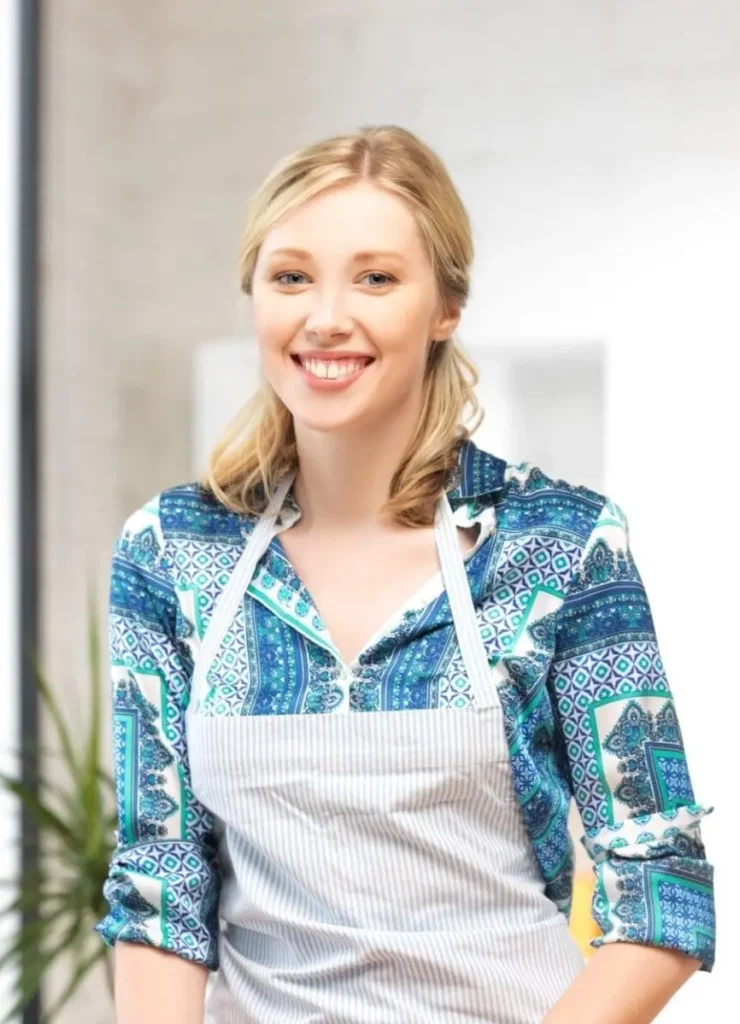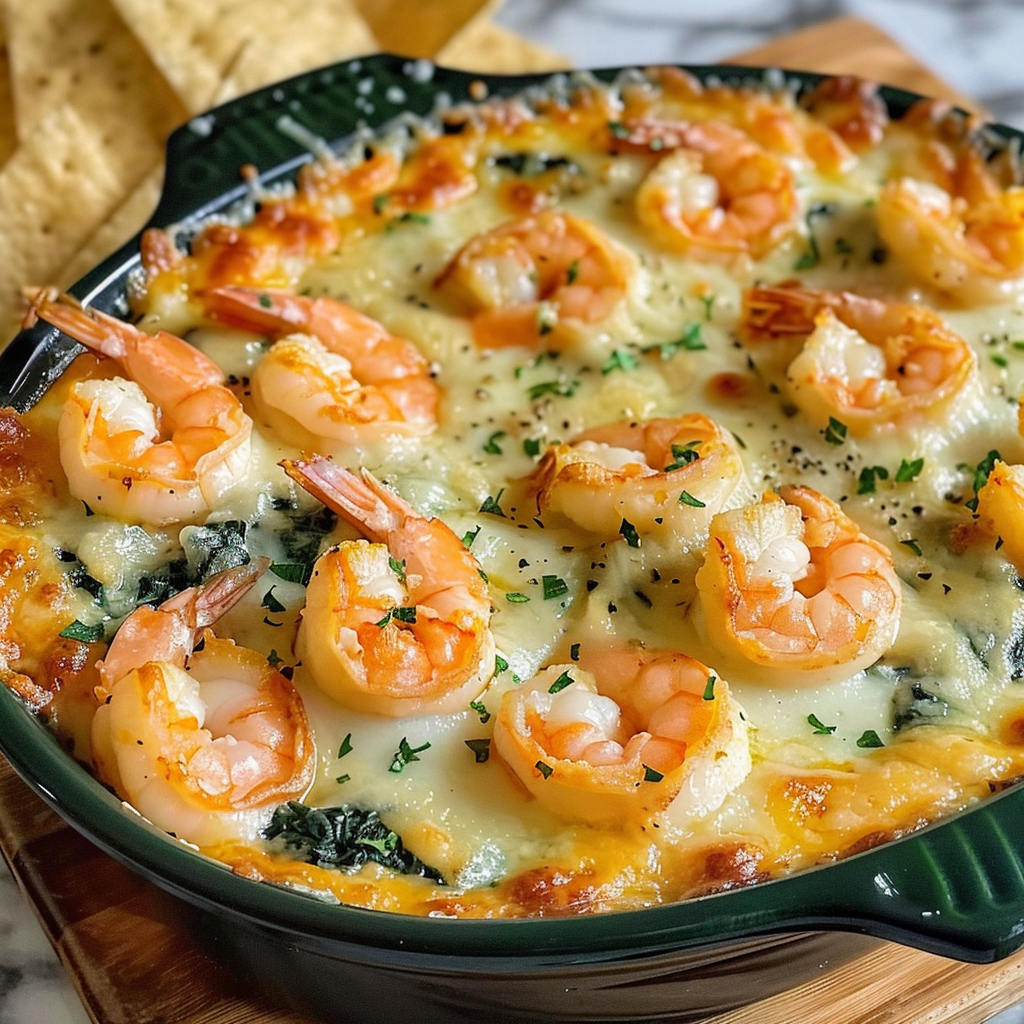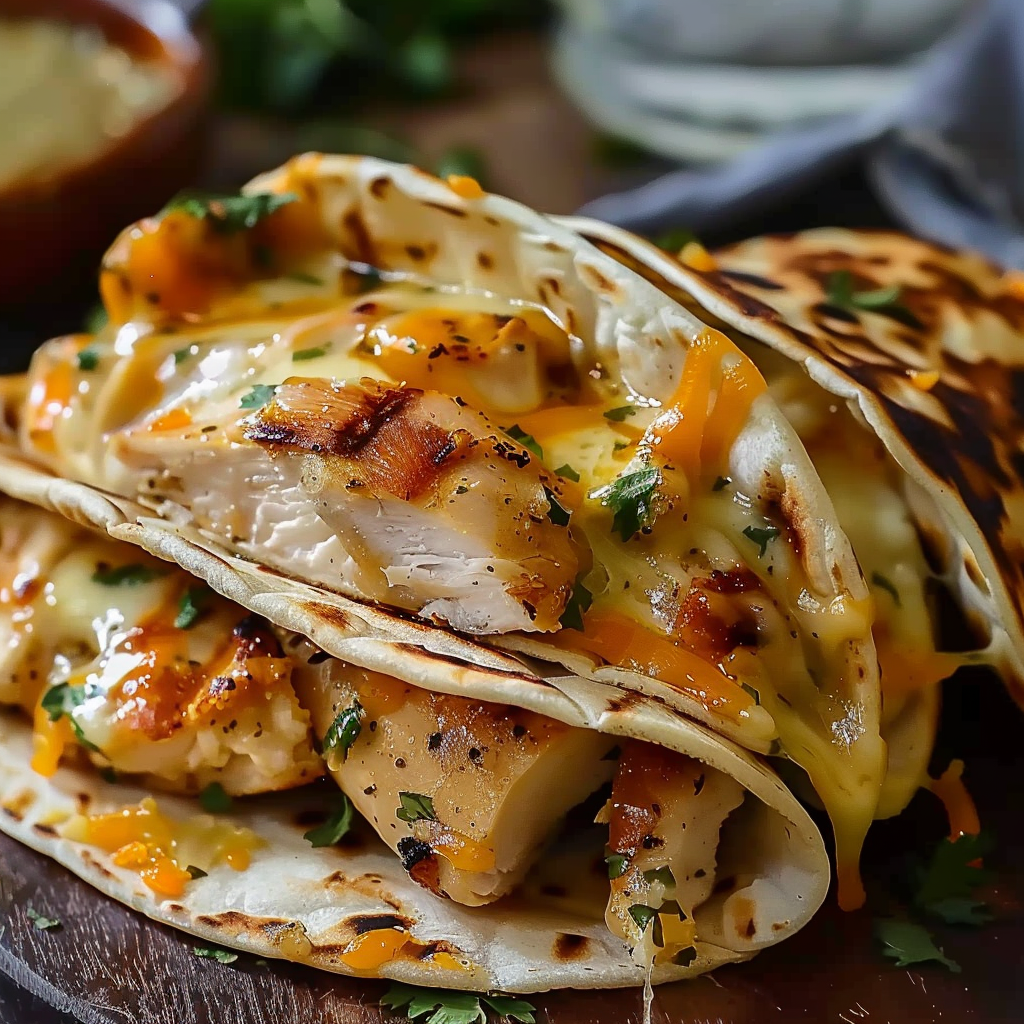Mac and cheese have long been cherished as one of the ultimate comfort foods, bringing warmth and satisfaction to families across the globe. This simple yet flavorful dish combines tender pasta with creamy, melted cheese to create a meal that is loved by both kids and adults alike. Its rich texture and nostalgic appeal have made it a staple at holiday gatherings, potlucks, and weeknight dinners. While many people are familiar with the store-bought versions, there’s something truly special about making mac and cheese from scratch.
Homemade mac and cheese stand out because it offers a richer, more indulgent experience. Unlike boxed versions that can be overly processed and lack complexity, making it at home allows you to control the quality of ingredients and customize the flavors to your liking. From selecting the type of cheese to achieving the perfect balance of creaminess, homemade mac and cheese elevates the dish to a whole new level of deliciousness. In this recipe, we combine sharp cheddar and stretchy mozzarella for a velvety sauce that coats each piece of pasta, creating the ultimate cheesy goodness. If you’re craving a dish that is both comforting and satisfying, this recipe will hit the spot.
Ingredient Breakdown and Role in the Recipe
Dry Elbow Macaroni (3 cups):
Elbow macaroni is the traditional choice for mac and cheese because its small, curved shape captures the creamy sauce, ensuring each bite is filled with cheesy goodness. It also holds its structure well after being cooked and baked, making it perfect for this dish. Cooking the pasta “al dente” (firm to the bite) is crucial to avoid soggy noodles after baking. Typically, al dente pasta takes about 7-8 minutes to cook. It provides the right texture to balance the creamy sauce.
Salted Butter (4 tablespoons):
Butter is essential for giving mac and cheese its rich, comforting flavor. Stirring it into the hot pasta right after draining not only coats the noodles but also prevents them from sticking together. The butter enhances the creaminess and contributes to the overall silky texture of the sauce.
Evaporated Milk (2 cans of 12 oz each):
Evaporated milk is key to creating a velvety, creamy sauce. Unlike regular milk, evaporated milk has had some of its water content removed, which concentrates the flavor and makes it thicker. It adds creaminess without watering down the dish, ensuring that the mac and cheese stays rich and luscious after baking.
Milk of Choice (⅓ cup):
Adding a splash of regular milk (or your milk of choice, such as whole, 2%, or even almond milk) lightens the texture slightly and helps thin out the sauce just enough to blend with the eggs. It adds a subtle richness without being overwhelming.
Eggs (2 large):
Eggs play a vital role in binding the mac and cheese together, giving it a custard-like texture as it bakes. Whisking the eggs into the milk mixture ensures that the sauce holds together when baked, creating a cohesive dish rather than one that separates or turns runny.
Garlic Salt (¼ teaspoon):
Garlic salt adds a hint of seasoning without overpowering the delicate cheese flavors. It provides a subtle, savory undertone that enhances the overall taste of the dish.
Cheddar Cheese (4 cups shredded):
Cheddar cheese is a classic choice for mac and cheese, offering a sharp, tangy flavor that complements the creaminess of the sauce. Its ability to melt smoothly makes it ideal for creating that gooey, rich texture we all love. A high-quality, sharp cheddar will bring out the boldest flavors in the dish.
Mozzarella Cheese (2 cups shredded):
Mozzarella is known for its stretchy, melty properties, making it the perfect partner to cheddar in this recipe. It balances out the sharpness of cheddar with a milder, creamier flavor, giving the mac and cheese a wonderful texture and stretch when served.
Paprika (1 teaspoon):
Paprika adds a dash of color and a subtle, smoky warmth to the mac and cheese. While optional, it enhances the visual appeal of the dish, giving it an inviting, golden hue as it bakes.
Choosing the Right Cheese Combination
Cheese is the star of any mac and cheese dish, so selecting the right combination is essential for achieving the perfect balance of flavor and texture. The quality of cheese you use will significantly impact the final result. Freshly shredded cheese melts more smoothly than pre-shredded cheese, which often contains anti-caking agents that can affect the texture of the sauce.
For this recipe, we use a blend of sharp cheddar and mozzarella to strike the ideal balance. Cheddar offers a bold, tangy flavor that gives mac and cheese its distinctive taste, while mozzarella provides a mild creaminess and adds the satisfying stretch that makes each bite fun and indulgent. The contrast between the sharpness of cheddar and the gooey texture of mozzarella creates a well-rounded dish that is both flavorful and rich.
While cheddar and mozzarella are classic choices, there are several other cheeses you can experiment with to elevate your mac and cheese. Gouda adds a smoky, slightly sweet flavor, while parmesan brings a salty, umami punch that complements the richness of the dish. For those who enjoy a bit of heat, pepper jack is an excellent addition, offering a spicy kick that blends seamlessly with the creamy base. You can even try combining three or more types of cheese for a more complex flavor profile, such as a mix of cheddar, gouda, and parmesan for a sophisticated take on this classic dish.
Ultimately, the key to great mac and cheese is selecting cheeses that melt well and balance each other in flavor, ensuring a rich, creamy, and irresistibly cheesy result every time.
Step-by-Step Instructions: From Boiling to Baking
Step 1: Boiling the Pasta
Start by bringing a large pot of salted water to a rolling boil. For every 3 cups of elbow macaroni, use at least 4-6 quarts of water and about 1 tablespoon of salt. The salt is crucial for seasoning the pasta from the inside out. Add the dry elbow macaroni and cook it for 7-8 minutes, stirring occasionally. You want to cook the pasta until it’s al dente—firm but not too soft—since it will continue to cook in the oven. Once done, drain the pasta immediately and return it to the pot.
Step 2: Coating the Pasta with Butter
While the pasta is still hot, stir in the 4 tablespoons of salted butter. This step is essential as it ensures the pasta remains rich and buttery while preventing it from sticking together. The butter also acts as a base layer, allowing the cheese sauce to cling to the pasta better. Ensure that the butter is evenly distributed so that each piece of macaroni is coated, providing a smooth and rich texture that enhances the overall creaminess of the dish.
Step 3: Whisking the Milk and Egg Mixture
In a large mixing bowl, whisk together 2 cans of evaporated milk, ⅓ cup of milk (your milk of choice), 2 large eggs, and ¼ teaspoon of garlic salt. Whisk thoroughly until the mixture is smooth and well combined. The eggs help bind the mac and cheese together during baking, while the milk creates a creamy consistency. It’s important to whisk the eggs and milk mixture until fully incorporated to avoid any lumps or uneven texture when it’s poured over the macaroni.

Step 4: Cheese Layering
Next comes the fun part—layering the cheese. In a separate bowl, combine the 4 cups of shredded cheddar cheese and 2 cups of shredded mozzarella. This blend of cheeses ensures both flavor and meltability. Begin by spreading a third of the buttered macaroni into a lightly greased 9×13 inch baking dish. Then, sprinkle a third of the cheese mixture evenly over the pasta. Repeat this process for two more layers, ending with a generous layer of cheese on top. This layering method ensures that the cheese is distributed throughout the dish, rather than sitting only on top, giving every bite an even amount of cheesy goodness.
Step 5: Pouring the Egg and Milk Mixture
Once your macaroni and cheese layers are set, it’s time to add the milk and egg mixture. Slowly and evenly pour the mixture over the entire dish. Pouring it gradually helps the liquid seep into all the crevices, ensuring that every layer of pasta is coated. The milk mixture will soak into the noodles as it bakes, creating that classic creamy texture that makes mac and cheese irresistible. Be sure to pour it evenly across the dish for consistent results.
Step 6: Sprinkling Paprika and Baking
Finish the dish by sprinkling 1 teaspoon of paprika evenly over the top layer of cheese. This not only adds a subtle warmth and smoky flavor but also gives the mac and cheese a vibrant color once baked. Place the dish into a preheated oven set to 375°F (190°C). Bake for 25-30 minutes, or until the top is golden and bubbling, and the edges are slightly crispy. The cheese should be fully melted and the pasta should be creamy but set. Allow the dish to cool for a few minutes before serving.
Tips for the Perfect Baked Mac and Cheese
Preheat the Oven Properly:
Preheating your oven is essential for ensuring even baking. Start heating the oven while you’re preparing the ingredients so it’s at the right temperature when the mac and cheese goes in. An oven that’s too cold may lead to uneven cooking, while an overly hot oven might dry out the top before the inside is cooked.
Ensure Even Baking:
To ensure the mac and cheese bakes evenly, consider rotating the dish halfway through the cooking time. This helps prevent any spots from getting too crispy or undercooked. If your oven tends to have hot spots, rotating the dish will distribute the heat more uniformly.
Allow the Dish to Set Before Serving:
Let the mac and cheese cool for at least 5 minutes before serving. This gives the sauce a chance to set, making the dish easier to cut and serve. It also ensures that the flavors meld together, resulting in a smoother texture.
Avoid Overbaking or Dry Mac and Cheese:
To avoid overcooking, keep an eye on the dish during the last 5-10 minutes of baking. If the top looks like it’s browning too much, you can cover it with foil. If your mac and cheese tends to come out dry, try increasing the amount of liquid (more milk or evaporated milk) or shortening the bake time.
Use Foil for Less Crispy Tops:
If you prefer a softer top layer, loosely cover the dish with aluminum foil for the first 15-20 minutes of baking. Remove the foil for the final 10 minutes to let the cheese melt and develop a golden color without becoming too crispy.
Variations of the Classic Mac and Cheese
Bacon Mac and Cheese:
For a smoky twist, add crispy bacon to your mac and cheese. Cook 6-8 slices of bacon until crisp, crumble them, and sprinkle the pieces into the macaroni layers along with the cheese. The salty, smoky flavor of the bacon complements the creamy cheese sauce, adding both texture and a rich taste.
Spicy Mac and Cheese:
If you like a little heat, try adding diced jalapeños or substituting pepper jack cheese for some or all of the cheddar. This gives the dish a spicy kick while maintaining its creamy base. You can also stir in a dash of cayenne pepper or hot sauce to the milk mixture for extra spice.
Three-Cheese Mac and Cheese:
Elevate the flavor by using a blend of three cheeses. A combination of sharp cheddar, gouda, and parmesan creates a deeper, more sophisticated flavor profile. The cheddar gives tanginess, the gouda adds a smooth, nutty flavor, and parmesan brings a salty, umami punch that complements the creaminess of the sauce.
Vegan Mac and Cheese:
For a plant-based version, use dairy-free substitutes such as almond milk, vegan butter, and a combination of nutritional yeast and vegan cheese for the sauce. Nutritional yeast adds a cheesy, nutty flavor that mimics the taste of traditional cheese, while dairy-free cheeses give the creamy texture you expect in a classic mac and cheese.
Serving Suggestions and Pairings
Mac and cheese is a versatile dish that can be served on its own or paired with various sides to create a more complete meal. Here are some ideas for serving and pairing:
As a Main Dish:
Mac and cheese can easily be the star of the meal. For a heartier dish, you can stir in some cooked chicken, sausage, or vegetables like broccoli or spinach before baking. For a more balanced plate, serve mac and cheese alongside a simple green salad with a tangy vinaigrette to cut through the richness.
As a Side Dish:
Mac and cheese is a classic side dish for barbecues or comfort meals. It pairs wonderfully with dishes like pulled pork, grilled chicken, or roasted vegetables. You could also serve it alongside baked beans or coleslaw for a Southern-inspired spread.
Comfort Food Pairings:
For the ultimate comfort food experience, serve your mac and cheese with warm garlic bread, roasted Brussels sprouts, or even a bowl of tomato soup. These pairings complement the creamy, cheesy richness of the dish while adding different textures and flavors to the meal.
Leftovers and Storage Tips
Storing Leftovers:
To store leftovers, allow the mac and cheese to cool completely before transferring it to an airtight container. It will keep in the refrigerator for up to 4 days.
Freezing Mac and Cheese:
You can also freeze mac and cheese for up to 3 months. Wrap the dish tightly in foil and place it in a freezer-safe bag. To reheat, thaw in the refrigerator overnight, then bake at 350°F (175°C) for 20-30 minutes, covered, until heated through.
Reheating Tips:
When reheating, add a splash of milk or cream to keep the mac and cheese from drying out.
Frequently Asked Questions (FAQs)
Can I use a different type of pasta?
Yes, you can definitely use other pasta shapes like shells, penne, or cavatappi. Each shape has a unique ability to hold onto the cheesy sauce, with shapes like shells or cavatappi providing nooks and curves that trap extra cheese. Just be sure to cook the pasta al dente, as it will continue cooking in the oven.
How do I prevent my mac and cheese from becoming dry?
To avoid dry mac and cheese, make sure you’re using the right amount of liquid—this recipe calls for evaporated milk and regular milk to maintain creaminess. Also, avoid overbaking it. Check your mac and cheese after 25 minutes to make sure it’s bubbling and creamy without drying out.
Can I make mac and cheese ahead of time?
Yes! You can assemble the mac and cheese, cover it, and store it in the refrigerator for up to 24 hours before baking. When you’re ready to cook it, let it sit at room temperature for about 15-20 minutes, then bake as directed. This makes it a great option for meal prep or entertaining.
What’s the best way to reheat mac and cheese?
To reheat mac and cheese, use the oven for the best results. Preheat your oven to 350°F (175°C) and cover the dish with foil to retain moisture. Heat for about 20-25 minutes, or until warmed through. Adding a splash of milk or cream before reheating can help keep it creamy.
How can I make my mac and cheese creamier?
For extra creaminess, try adding a dollop of cream cheese or sour cream to the milk mixture. These ingredients help create a silkier texture and add a subtle tang that enhances the richness of the dish.
Can I freeze leftover mac and cheese?
Yes, you can freeze leftover mac and cheese. Let it cool completely, then store it in an airtight container or freezer-safe bag. To reheat, thaw it in the fridge overnight and then bake it in the oven at 350°F (175°C) until heated through.
Conclusion: Why This Recipe Stands Out
This homemade mac and cheese recipe is the perfect balance of simplicity and indulgence. With its creamy, cheesy layers and the rich, comforting flavor of cheddar and mozzarella, it elevates a classic dish into something extraordinary. The use of evaporated milk ensures a luscious texture that beats any store-bought version. Best of all, this recipe is versatile—whether you’re making it ahead for a family dinner or adding your favorite ingredients for a personal twist. Give it a try and experience the homemade difference with every bite of this rich and satisfying comfort food!
Print
Good Ole Fashion Mac and Cheese
Description
This Good Ole Fashioned Mac and Cheese recipe is a rich, creamy, and cheesy dish that brings the warmth of homemade comfort food to your table. With layers of gooey cheddar and mozzarella, the combination of evaporated milk and butter creates a velvety sauce that coats each piece of macaroni perfectly. Whether served as a main course or a side, this mac and cheese is sure to become a family favorite. Simple to make, customizable, and baked to golden perfection, this dish is the ultimate in comfort food satisfaction.
Ingredients
- 3 cups dry elbow macaroni
- 4 tablespoons salted butter
- 2 cans (12 oz each) evaporated milk
- ⅓ cup milk of choice (whole, 2%, or alternative milk)
- 2 large eggs
- ¼ teaspoon garlic salt
- 4 cups shredded cheddar cheese
- 2 cups shredded mozzarella cheese
- 1 teaspoon paprika (optional)
Instructions
1. Boil the Pasta:
Bring a large pot of salted water to a rolling boil. Add 3 cups of dry elbow macaroni and cook until al dente, about 7-8 minutes. Drain and return to the pot.
2. Coat the Pasta with Butter:
Stir in 4 tablespoons of salted butter until melted and the macaroni is evenly coated. This prevents the pasta from sticking and adds a layer of richness.
3. Prepare the Milk and Egg Mixture:
In a large bowl, whisk together 2 cans of evaporated milk, ⅓ cup of milk, 2 large eggs, and ¼ teaspoon garlic salt until smooth and well-combined.
4. Prepare the Cheese:
In a separate bowl, mix together 4 cups of shredded cheddar cheese and 2 cups of shredded mozzarella cheese.
5. Layer the Macaroni and Cheese:
Preheat your oven to 375°F (190°C). Lightly spray a 9×13 inch baking dish with non-stick spray. Layer ⅓ of the buttered macaroni in the dish, followed by ⅓ of the cheese mixture. Repeat the layers twice, finishing with a final layer of cheese on top.
6. Pour the Milk Mixture:
Evenly pour the milk and egg mixture over the layered macaroni and cheese, making sure the liquid seeps through all the layers.
7. Add Paprika and Bake:
Sprinkle 1 teaspoon of paprika over the top (optional) for added flavor and color. Place the dish in the preheated oven and bake for 25-30 minutes, or until the top is golden and bubbling.
8. Let it Cool:
Remove the dish from the oven and let it cool for a few minutes before serving. This allows the mac and cheese to set slightly, making it easier to serve.
9. Serve and Enjoy:
Serve hot and enjoy the creamy, cheesy goodness with your family and friends.
Notes
- Choosing Cheese: For a richer flavor, feel free to mix other cheeses like gouda, parmesan, or pepper jack along with the cheddar and mozzarella. Freshly grated cheese will melt better than pre-shredded varieties.
- Texture: For a creamier mac and cheese, you can add a little cream cheese or sour cream to the milk mixture. This will give the dish a silkier texture.
- Paprika: Paprika is optional but adds a subtle smoky flavor and a beautiful golden finish to the dish. You can also experiment with smoked paprika or cayenne for a slight kick.
- Make-Ahead Tip: Assemble the mac and cheese and refrigerate it (unbaked) for up to 24 hours. When ready to bake, bring it to room temperature for 15-20 minutes and bake as directed.
- Leftovers: Store leftover mac and cheese in an airtight container in the refrigerator for up to 4 days. To reheat, add a splash of milk or cream and heat in the oven or microwave to maintain creaminess.










This sounds delicious, but I have not yet tried the recipe. Can this be successfully cooked in a crock pot, and if so, are there any ingredient changes I need to make? Thanks!
Cheese was not gooey like described. It clumped and stuck together. I followed the directions.
My cheese clumped too and I also followed the directions. Not sure what went wrong.
Five stars for the recipe. Negative stars for not giving credit where credit is due. This is identical to John Legend’s macaroni and cheese recipe, which has been attributed to him on the internet since at least 2013. Additionally, this recipe was showcased on Martha Stewart’s show when he was her featured guest in 2015.
★★★★★
I made this recipe for a friendsgiving and it was the talk of the night! Everyone loved it and requested I bring it to every event we have from now on! Will definitely make this again, it was a simple recipe to follow and turned out so cheesy and creamy!
★★★★★